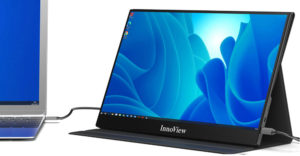
Half a dozen companies this week announced a new organization to ensure that the billions of devices that will be added to the Internet in coming years will be able to communicate with each other.
The Open Interconnect Consortium was launched to define the connectivity requirements and improve the interoperability of some 200 billion devices expected to make up the Internet of Things by 2020.
The consortium will focus on defining a common communications framework based on industry standard technologies to wirelessly connect and intelligently manage the flow of information among personal computing and emerging IoT devices, regardless of form factor, operating system or service provider.
Founding members are Intel, Samsung, Dell, Broadcom, Atmel and Wind River.
The consortium’s members aim to make IoT interoperability an open source project.
“Open source is about collaboration and about choice,” said Jim Zemlin, executive director of The Linux Foundation. “The Open Interconnect Consortium is yet another proof point how open source helps to fuel innovation.”
Let There Be Order
The group also wants to bring some order to a fragmented universe.
“Today, there are multiple forums driving different approaches to solve the challenge of device-to-device connectivity and interoperability,” said Ido Sarig, vice president and general manager for the IoT Solutions Group atWind River.
“Currently, we don’t see one single effort that addresses all the necessary requirements. The companies involved in the Open Interconnect Consortium believe that secure and reliable device discovery and connectivity is a foundational capability to enable IoT,” he told LinuxInsider.
“The companies also believe that a common, interoperable approach is essential, and that both a standard and open source implementation are the best route to enable scale,” added Sarig.
The consortium plans to take the lead in establishing a single solution covering interoperability across multiple vertical markets and use cases, he explained. It’ll do that by creating an industry standard specification and an open source project, to drive both interoperability and innovation.
“To fully realize the vision of IoT, devices should be able to discover, connect and interoperate regardless of who makes them,” Sarig said. “The goal with OIC is to enable interoperability wherever we can.”
Babble Removal
The consortium’s members see interoperability as a key area that’s not been addressed so far in the development of the Internet of Things.
“The connectivity portion of IoT is taken care of,” Gary Martz, a wireless marketing product line manager at Intel, told LinuxInsider. “Devices talk to the cloud all the time. The connectivity challenge has been solved.”
However, while device-to-cloud connectivity is on a solid foundation, device-to-device connectivity is not. That may be a looming problem for the IoT.
“A lot of the connectivity that is going to be required is going to be device to device,” Martz said.
Many of the devices in the market have capable radios for communication, but they’re forced to communicate with each other through some kind of cloud service, he pointed out.
“If I’m sitting at a conference room table, it’s much more efficient if I can use the radio in my device to beam stuff directly, device to device,” Martz explained.
Moreover, many of the devices in the IoT — wearables, watches and such — will need help performing some functions through the cloud.
“These devices aren’t going to have the power to communicate directly with the cloud,” Martz said. “In those instances, the devices are going to want to proxy through other devices — whether it be PC, smartphone, tablet or some sort or gateway.”
Those devices, too, will want to talk with each other.
“For developers, that’s a huge challenge,” Martz observed.
It’s a heterogeneous environment with multiple operating systems, multiple architectures, and multiple forms of radio transport — WiFi, Bluetooth, Bluetooth low energy, WiGig, 3G, 4G,” he noted.
“That developers’ challenge is what we’re trying to solve,” said Martz. “We’re addressing how you integrate all these wireless technologies for peer-to-peer communication within applications in a secure manner.”




















































